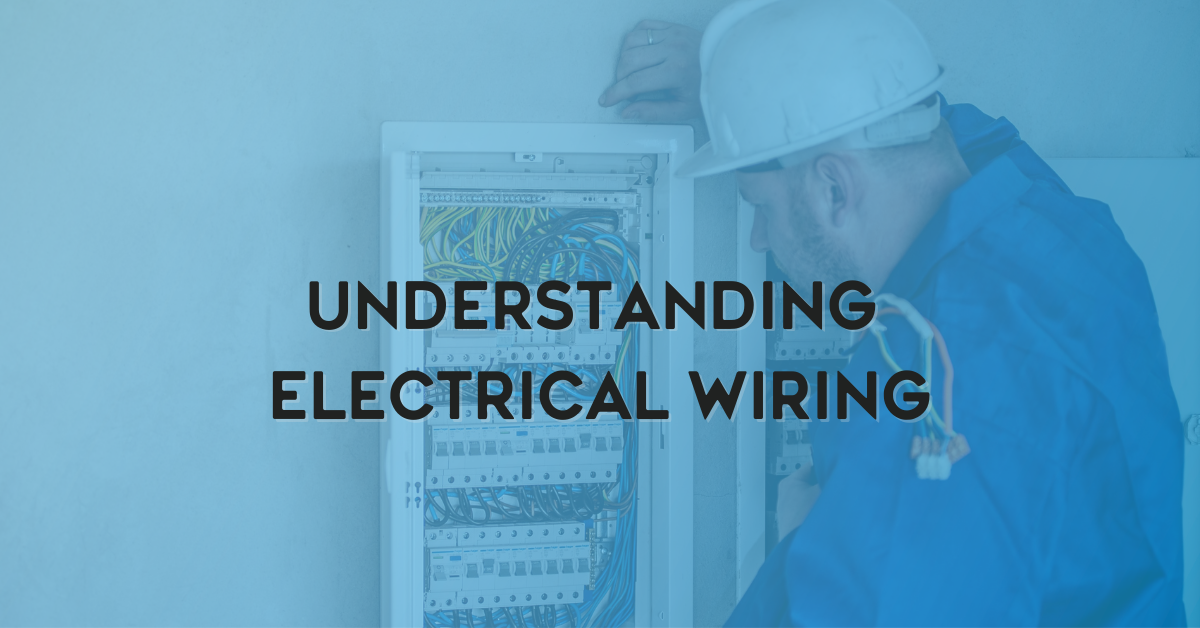
An understanding of electrical wiring improves the efficiency and safety of any facility’s employees, especially for non-electricians who perform basic maintenance on electrical equipment. Maintenance staff, especially, should have at least a basic understanding of electrical wiring and your facility’s electrical infrastructure, and benefit from basic electricity training.
Below is a brief explanation of basic electrical wiring as it applies to most buildings. Bear in mind manufacturing plants have a much heavier electrical load, and their electrical systems may be very different from what is described here. Exceptionally large manufacturing plants may possess their own power stations. For offices, commercial buildings, and rental facilities, the following explanation should help employees understand the layout of facility wiring.
Line portions and load sides
Basic electricity layouts start with the “line portion,” or the infrastructure required to deliver electricity from a utility provider to your facility. All electrical systems and wiring within the facility are considered “load side.” The utility provider is only responsible for the line portion of your electrical system: all wiring, systems, and equipment on the load side is the responsibility of your facility.
Facility service connectors and electrical meter
The average building’s load side begins with the power service and electrical meter. Located on the outer wall of a facility, the service connector is where the utility company service cables connect to the building's electrical meter. The meter measures the amount of electricity used by the building and provides the utility company with billing information.
The service connector includes one of the most important basic electricity safety features: the disconnect switch. In the event of an emergency, including fire, throwing the disconnect switch shuts off all power to the building without having to enter the facility.
Main service panel
The main service panel, commonly called the breaker box, is where the incoming electrical wiring connects to the facility’s electrical system. Two “hot” wires connect to large screw terminals, or lugs, on the service panel. A third cable, the neutral cable, connects to a neutral bus bar. Electricity enters the system through the hot wires, passes through the system, and is fed back to the utility on the neutral wire to complete the electrical circuit.
Main circuit breaker
The main circuit breaker controls power to your main service panel’s breakers. The demands of your facility will determine how much amperage can flow through the main circuit breaker without causing the breaker to “trip” and turn off the flow of power. While the disconnect switch cuts off all power to the building, the main circuit breaker only cuts power to other circuits: the flow of power to the main service panel’s lugs continues when the main circuit breaker is thrown.
Branch circuit breakers
A mainstay of basic electricity, branch circuit breakers are usually found beneath the main circuit breaker on the main service panel. Each branch circuit breaker delivers power to a predetermined area of the facility, delivering power to light fixtures, switches, electrical outlets, and electrical equipment. Throwing a branch circuit breaker strops power only to the electrical wiring and equipment connected to that specific branch circuit, allowing power to continue to flow to the rest of the building.
Large pieces of electrical equipment are often connected to dedicated single branch circuits, so the flow of electricity may be shut off without affecting lighting or other systems.
Basic electrical wiring and conduits
The basic electrical wiring that runs throughout your facility comes in several forms. NM cable, for instance, is a common cable wiring used in dry, protected locations where damage is unlikely. For areas where your electrical wiring requires more protection, Bx cable (also known as armored cable) shields wiring with a flexible aluminum or steel sheath.
Electrical conduit describes rigid metal or plastic tubing designed to protect electrical wiring from environmental threats and is commonly used outdoors or in indoor locations where the risk of damage to wiring is high.
Electrical wiring uses color codes to identify the purpose of individual lines, and whether or not wires are live. Employees working with electricity should understand all electrical wire coding systems.
- Black wires are hot wires that carry live electrical loads.
- Red wires are also hot wires but are used solely to connect smoke detectors.
- White or gray wires are connected to the neutral bus bar, but can still carry an electrical charge.
- White wires wrapped in red or black electrical tape are hot wires where, for some reason, white wire had to be used.
- Green wires connect to grounding terminals and may be live if there is a problem in the electrical system.
- Bare copper wires are grounding wires.
- Blue and yellow wires are sometimes used as hot wires in electrical conduits.
A full understanding of basic electricity requires training under the supervision of an experienced instructor. If your employees work with electrical wiring as part of their job duties, a basic electricity course is vital for safe interaction with electrical systems.






Comments
Sorry, no comments found for this article